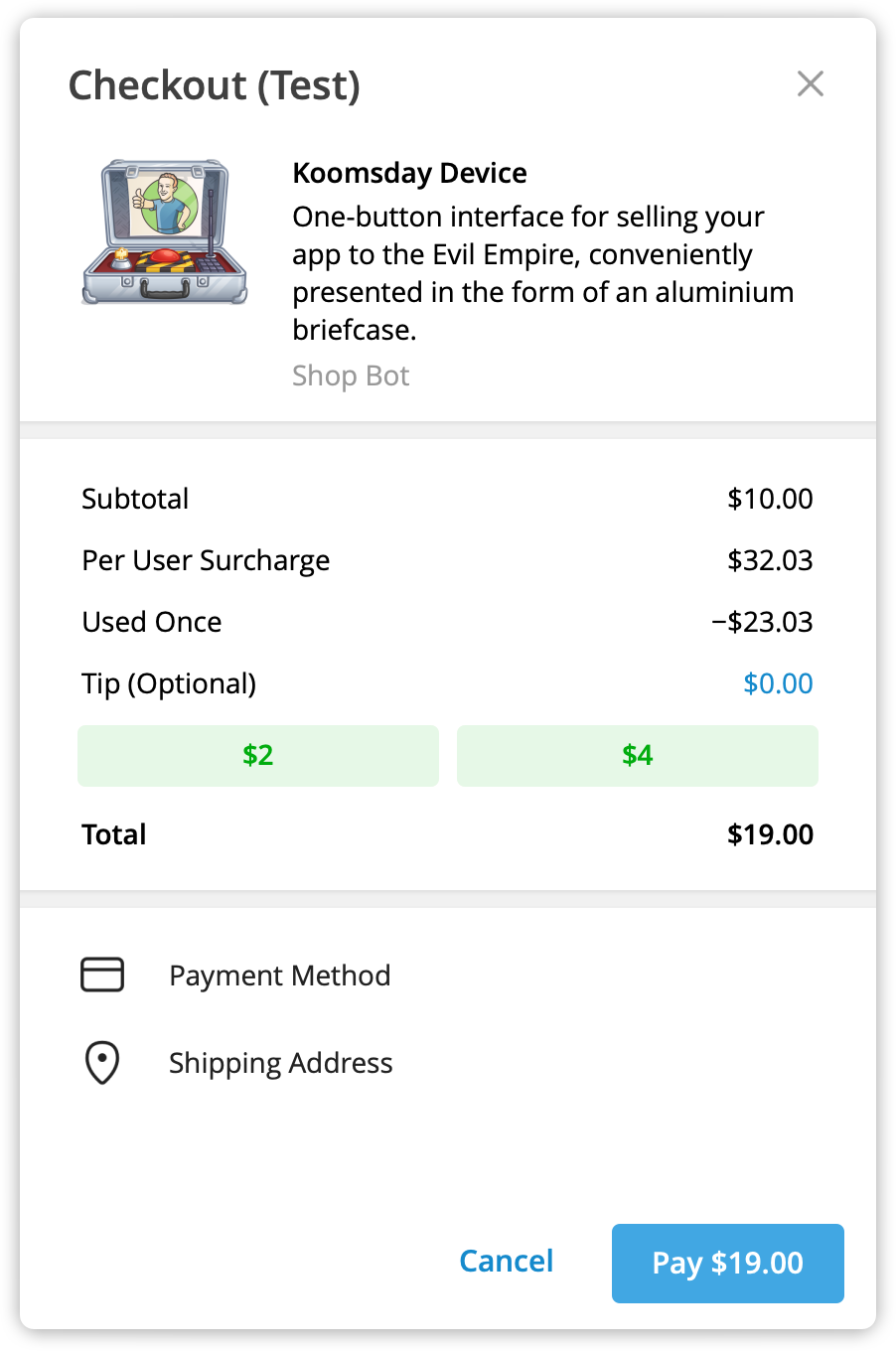By now, you’ve probably already heard about Web3 or Web 3.0, but just like many people, you might not be sure what Web3 really is. In this article, we will explain what the Web 3.0 is, and show with examples how Telegram is taking this new technology to the masses.
Telegram’s growth in this direction is not just about adding new features to the app, but about becoming a leader for the internet of the future. Keep reading and learn what Web3 is, and why Telegram and the TON ecosystem are crucial for the future of internet decentralization and freedom.
Does Web 3.0 Actually Exist?
Technically speaking, there is no actual Web1, Web2, Web3, or Web99. These terms are concepts that have been created to describe significant technical improvements and their social impact through time. The Web 3.0 concept was born as an ideal to build an internet with no central authorities, serving all users and not only big holders.
There isn’t one exact definition of Web3, but one key idea sets it apart from Web2: decentralization. Web3 is about an internet built on decentralization, made possible by blockchain technology. We don’t yet know how this approach will affect society on a large scale, but it already seems like a logical step in the evolution of the world wide web.
When people first began talking about Web 2.0 more than two decades ago, the internet was very different from today, and many saw the term as a marketing buzzword for selling new trends. Yet, those who believed in this new model correctly predicted the internet's evolution.
Origins of the Digital Age
In the early years of the internet, during the 1990s, there was no social media as we know it today, nor the ability to stay online all day through a mobile device. The "cyberspace" consisted of simple, basic pages that people could visit only if they knew the address, or used the first web browsers and directories, which are now obsolete.

In the early 2000s, people began moving away from personal web pages on GeoCities and started using platforms like MySpace and Blogger. New sites like YouTube and Facebook emerged, transforming online, and real life, human interaction. This significant change needed a name, and in 2005, Tim O’Reilly popularized the term "Web 2.0."
Since then, Web 2.0 has evolved as many expected, but it has also brought new problems, causing the real need for a significant shift. Thanks to the rise of blockchain technology and its great potential, the chance for change has arrived.
The Dawn of Web 2.0
The web most people use today is based on two-way communication, instant sharing, and user-created content. Though this has imopacted society in great ways, this growth has also brought problems, especially with the rise of big tech companies and the large amount of valuable data constantly generated by billions of users worldwide.

Some of the issues Web 2.0 critics usually mention, are:
- Centralization of Power: A few very large tech companies control vast amounts of user data and dominate online platforms, limiting competition and innovation.
- Data Privacy Concerns: Users often have little control over how their data is collected, stored, and used, leading to concerns about surveillance, data breaches, and the misuse of personal information.
- Censorship and Content Moderation: Centralized platforms have the power to censor or remove content, leading to debates about free speech and the overreach of content moderation policies.
- Exploitation of User Data: Companies profit from user data by selling it to advertisers, often without users fully understanding or consenting to how their data is being used.
- Digital Identity Management: Users have to create and manage multiple digital identities across various platforms, leading to security risks and identity fragmentation.
- Algorithmic Bias and Manipulation: Algorithms used by platforms can create echo chambers, reinforce biases, and manipulate user behavior, often prioritizing engagement over accuracy or user well-being.
- Net Neutrality Threats: The principle of net neutrality, which ensures equal access to all online content, has been challenged, potentially allowing Internet Service Provider companies to prioritize certain content or services over others, or even restrict it.
- Cybersecurity Risks: The centralized nature of Web 2.0 makes platforms vulnerable to hacking, data breaches, and other cybersecurity threats that can have widespread impacts.
Today, in a world much more advanced and complex than when Web 2.0 began, innovators like Gavin Wood, co-founder of Ethereum, or Pavel Durov, founder of Telegram, are working to build a real Web 3.0, beyond just a concept.
Do We Need a Web 3.0?
We don’t need something new just because it’s new, but we do need to improve what we can, especially if we have the right tools. With the appearance of blockchain technology, the liberating idea of data storage and computational power being decentralized, and without ownership, became a real possibility.
Beyond decentralization, blockchain technology helps ensure security and transparency when transferring information. This means users can interact with applications without needing to trust a third party to protect their data. Compared to traditional systems, blockchain technology makes it nearly impossible to steal or fake data.
A new world wide web model, based on blockchain technology, could bring many advantages that Web 2.0 currently lacks:
- No Central Authority: Software and services control is shared across the network, reducing the risk of exclusion or manipulation by single powerful entities.
- Cryptographic Protection: Advanced encryption keeps all kind of transactions safe from unauthorized intervention.
- Open Ledger: All data transactions are visible and can be checked by anyone on the network, making the system transparent and building trust among users.
- Immutable records: Data, once added, cannot be changed, which builds legitimacy and prevents manipulation.
- Digital Ownership: Users can own and control digital assets like digital tokens without relying on any platform, giving them full control and ownership of their digital assets in the whole network.
- Decentralized Identities: Users manage their identities without depending on central authorities, improving privacy and giving them more control over their personal information.
- Smart Contracts: Agreements automatically take action when certain conditions are met, reducing the need for middlemen and making things faster and more reliable. This can be used to automate many different tasks.
- Pseudonymity: Users can interact without revealing their real identities, protecting their privacy while still proving who they are.
- Economic innovation: New financial models like decentralized finance (DeFi) and token economies can grow, offering more opportunities for economic growth and participation.
How far this will go is still unknown, but the tools to fix Web 2.0 issues are here, and the potential is vast. Telegram adopted the Web 3.0 approach a few years ago, and today, the future of the internet is already installed on more than a billion devices worldwide.
Telegram and Web 3.0
Web 3.0 might still seem a bit abstract, but when you see what Telegram is doing, it makes more sense. Telegram is an open-source app run by a team known for supporting freedom of speech and privacy. Besides making one of the most popular communication apps today, they also built a powerful blockchain and helped create one of the top cryptocurrencies, $TON.

These all work together in a virtual space called TON (The Open Network) ecosystem. This ecosystem, available through the Telegram app offers Web 3.0 apps, wallets, and internet services to anyone for free. If Web 3.0 is the next step for the internet, then Telegram is leading the way.
Telegram’s Mini App Store
The Telegram Mini App Store is a new feature that lets users find and use Telegram Web 3.0 apps directly within the Telegram app. These mini apps are small, HTML5-based applications that work like traditional apps but are fully integrated into Telegram.

- How to Access:
- Open Telegram: Start by opening the Telegram app on your mobile device or desktop.
- Use the Search Bar: Tap the search icon at the top.
- Go to the 'Apps' Tab: In the search interface, tap on the "Apps" tab to see the mini apps available.
- Browse and Use: Scroll through the list and tap to launch any mini app directly in Telegram.
The Mini App Store supports Web 3.0 features, including decentralized applications (dApps), helping users enter the decentralized web within a familiar platform.
Web3 Browser
Telegram has added a Web3 browser to its app, letting users access decentralized websites and apps on the TON blockchain. This makes it easy to explore Web3 directly within Telegram.
- How to Use the Web3 Browser in Telegram:
- Open Telegram: Ensure you have the latest version of the app on your device.
- Search for TON Sites: You can use the search bar to find decentralized websites by their “.ton” domain, or access them through links shared in chats. For a catalog of TON Sites, you can visit this Telegram channel.
- Browse TON Sites: When you click on a TON Site link, the Web3 browser will open automatically in Telegram, allowing you to interact with the decentralized content.
The Web3 browser allows users to visit decentralized websites, known as TON Sites, directly in Telegram. These sites end with “.ton” and are hosted on the TON network, which provides enhanced security and privacy.
TON Web 3.0 DNS
TON DNS is a decentralized domain name system within the TON ecosystem. It works similarly to traditional DNS but with a focus on decentralization, providing a more user-friendly way to interact with blockchain addresses.
- Human-Readable Names: Instead of using long, complex blockchain addresses, users can register simple, easy-to-remember domain names like "yourname.ton." This makes transactions and interactions on the TON network more intuitive and user-friendly.
- Decentralization: Unlike traditional domain name systems controlled by centralized entities, TON DNS is decentralized, meaning no single authority has control. This enhances security and reduces the risk of censorship.
- Integration with TON Services: TON DNS integrates seamlessly with other TON services, such as TON Storage and TON Proxy, making it easier for users to access and use decentralized resources.
- Ease of Use: Users can register and manage their TON domains directly within the TON ecosystem, simplifying the process of interacting with decentralized applications (dApps) and smart contracts.
TON Payments and Micropayments
Telegram supports Web 3.0 payments using Toncoin, the native cryptocurrency of the TON blockchain. These payments use blockchain technology to offer decentralized, secure, and fast transactions directly within the Telegram app.

- Toncoin Integration: Users can send and receive Toncoin within Telegram, making peer-to-peer payments without needing banks or traditional payment services.
- Micropayments: The TON network’s low fees are perfect for small transactions, like tipping creators or buying digital goods.
- Decentralized Payments: Payments with Toncoin are processed on the TON blockchain, not through centralized services, giving users more control over their transactions.
- Security and Privacy: Toncoin transactions are secured by strong cryptography, keeping them safe and private. The decentralized nature of blockchain also enhances user privacy.
TON Web3 Wallets
TON Wallets are digital wallets made to store, manage, and use Toncoin, the cryptocurrency of TON. They can also work with some other currencies and networks. These wallets connect with Telegram, letting users easily manage their cryptocurrency within the app.

- Secure Storage: TON Wallets safely store Toncoin, protected by strong encryption and the decentralized blockchain.
- Easy Transactions: Users can send and receive Toncoin directly in the Telegram app, making it easy to handle cryptocurrency without using another platform.
- Multiple Wallet Options: There are different TON Wallets like Tonkeeper, Tonhub, and the official Telegram Wallet, each with unique features to meet user needs.
- Integration with Telegram: These wallets work smoothly with Telegram, allowing users to make payments, access dApps, and use the TON ecosystem directly from their chat interface.
The Web of the Future
Web 3.0 is more than just a concept; it's the next step for the internet, aiming to fix problems like centralization, privacy issues, and data misuse in Web 2.0. In this article, we’ve looked at how Web 3.0 is built on decentralization, security, and user control, all made possible by blockchain.
Telegram is leading this change. By integrating the TON ecosystem, Telegram is not just adding new features but is also helping to shape the future of the internet. With decentralized apps, payments, and secure, easy-to-use services, Telegram is making Web 3.0 available to everyone. As the internet evolves, Telegram will continue to play a key role in building a more open, private, and decentralized web.

